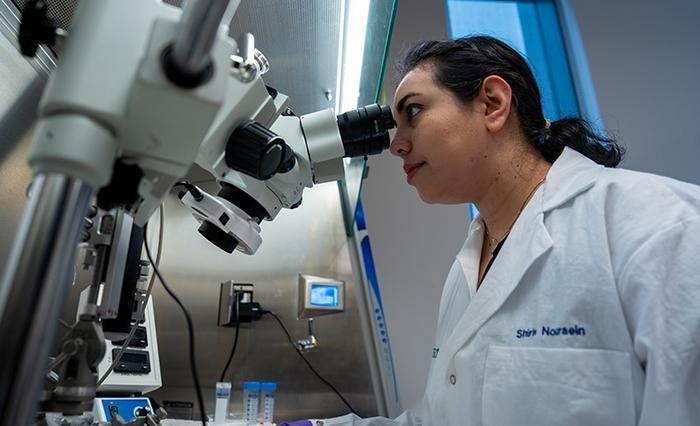Assay Detects Urinary Proteins in Bladder Cancer
|
By LabMedica International staff writers Posted on 08 Jul 2013 |
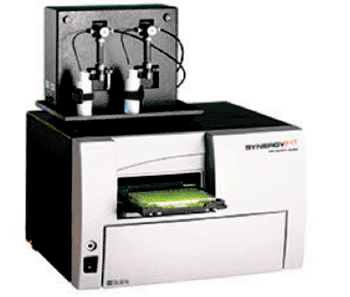
Image: Synergy HT Multi-Mode microplate reader (Photo courtesy of Biotek).
A high-throughput assay has been developed for the detection of tyrosine-phosphorylated proteins (TPPs) in urine of bladder cancer patients.
Urinary TPPs appear to be a potential cancer marker for the detection of early stages of bladder cancer, but the development of methods to perform the evaluation of their diagnostic performances and their clinical validation is crucial.
Oncologists at the University of Turin Medical School (Turin, Italy) collected urine specimens from 23 bladder cancer patients and 43 healthy volunteers. There were 19 males and 4 females with bladder cancer with a mean age of 67.65 ± 10.63. The scientists developed an immobilized metal affinity chromatography (IMAC) system that was miniaturized in a 96 well format. Luminescence, visible, and infrared fluorescence antibody-based detection methods were comparatively evaluated.
The luminescence end-point detection was performed by means of a Synergy HT Multi-Mode microplate reader (Biotek; Winooski, VT, USA) and infrared (IR) fluorescence detection was performed with the Odyssey Infrared Imaging System (LI-COR Biosciences; Lincoln, NE, USA). Due to their low abundance, both a phosphoprotein enrichment step and very sensitive detection methods are required to detect TPPs in urine samples. To pursue high throughput, reproducibility and cost containment, which are required for bladder cancer screening programs. The scientists coupled the preanalytical IMAC procedure with high sensitive detection phases using either infrared fluorescence or chemiluminescence in an automated platform.
The assay represents the first quantitative and high throughput method for the measurement of TPPs in urine. Preliminary evaluation of the sensitivity and the specificity was 87% and 95% respectively, which confirmed the excellent diagnostic performances of TPPs as bladder cancer marker. The authors concluded that their method had optimized the measurement of TPP levels in urine samples, integrating the preanalytical and analytical phases in a 96 well format and with the use of affordable detection methods. This method is now feasible to be applied to a large number of patients and high-risk subjects to establish its actual diagnostic and predictive power. The study was published in the June 2013 issue of the journal Biochimica et Biophysica Acta.
Related Links:
University of Turin Medical School
Biotek
LI-COR Biosciences
Urinary TPPs appear to be a potential cancer marker for the detection of early stages of bladder cancer, but the development of methods to perform the evaluation of their diagnostic performances and their clinical validation is crucial.
Oncologists at the University of Turin Medical School (Turin, Italy) collected urine specimens from 23 bladder cancer patients and 43 healthy volunteers. There were 19 males and 4 females with bladder cancer with a mean age of 67.65 ± 10.63. The scientists developed an immobilized metal affinity chromatography (IMAC) system that was miniaturized in a 96 well format. Luminescence, visible, and infrared fluorescence antibody-based detection methods were comparatively evaluated.
The luminescence end-point detection was performed by means of a Synergy HT Multi-Mode microplate reader (Biotek; Winooski, VT, USA) and infrared (IR) fluorescence detection was performed with the Odyssey Infrared Imaging System (LI-COR Biosciences; Lincoln, NE, USA). Due to their low abundance, both a phosphoprotein enrichment step and very sensitive detection methods are required to detect TPPs in urine samples. To pursue high throughput, reproducibility and cost containment, which are required for bladder cancer screening programs. The scientists coupled the preanalytical IMAC procedure with high sensitive detection phases using either infrared fluorescence or chemiluminescence in an automated platform.
The assay represents the first quantitative and high throughput method for the measurement of TPPs in urine. Preliminary evaluation of the sensitivity and the specificity was 87% and 95% respectively, which confirmed the excellent diagnostic performances of TPPs as bladder cancer marker. The authors concluded that their method had optimized the measurement of TPP levels in urine samples, integrating the preanalytical and analytical phases in a 96 well format and with the use of affordable detection methods. This method is now feasible to be applied to a large number of patients and high-risk subjects to establish its actual diagnostic and predictive power. The study was published in the June 2013 issue of the journal Biochimica et Biophysica Acta.
Related Links:
University of Turin Medical School
Biotek
LI-COR Biosciences
Latest Clinical Chem. News
- Chemical Imaging Probe Could Track and Treat Prostate Cancer
- Mismatch Between Two Common Kidney Function Tests Indicates Serious Health Problems
- VOCs Show Promise for Early Multi-Cancer Detection
- Portable Raman Spectroscopy Offers Cost-Effective Kidney Disease Diagnosis at POC
- Gold Nanoparticles to Improve Accuracy of Ovarian Cancer Diagnosis
- Simultaneous Cell Isolation Technology Improves Cancer Diagnostic Accuracy
- Simple Non-Invasive Hair-Based Test Could Speed ALS Diagnosis
- Paper Strip Saliva Test Detects Elevated Uric Acid Levels Without Blood Draws
- Prostate Cancer Markers Based on Chemical Make-Up of Calcifications to Speed Up Detection
- Breath Test Could Help Detect Blood Cancers
- ML-Powered Gas Sensors to Detect Pathogens and AMR at POC
- Saliva-Based Cancer Detection Technology Eliminates Need for Complex Sample Preparation
- Skin Swabs Could Detect Parkinson’s Years Before Symptoms Appear
- New Clinical Chemistry Analyzer Designed to Meet Growing Demands of Modern Labs

- New Reference Measurement Procedure Standardizes Nucleic Acid Amplification Test Results
- Pen-Like Tool Quickly and Non-Invasively Detects Opioids from Skin
Channels
Molecular Diagnostics
view channel
Four-Gene Blood Test Rules Out Bacterial Lung Infection
Lower respiratory tract infections (LRTIs) are among the most common reasons for antibiotic prescriptions, yet distinguishing bacterial infections from viral ones remains notoriously difficult.... Read more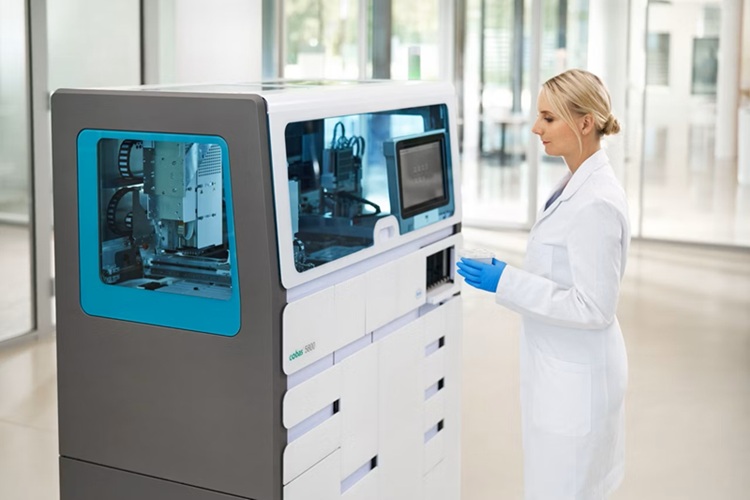
New PCR Test Improves Diagnostic Accuracy of Bacterial Vaginosis and Candida Vaginitis
Bacterial vaginosis (BV) impacts approximately 25% of women of reproductive age, while up to 75% of women experience candida vaginitis (CV) at least once in their lifetime. Vaginal symptoms are one of... Read moreHematology
view channel
Platelet Activity Blood Test in Middle Age Could Identify Early Alzheimer’s Risk
Early detection of Alzheimer’s disease remains one of the biggest unmet needs in neurology, particularly because the biological changes underlying the disorder begin decades before memory symptoms appear.... Read more
Microvesicles Measurement Could Detect Vascular Injury in Sickle Cell Disease Patients
Assessing disease severity in sickle cell disease (SCD) remains challenging, especially when trying to predict hemolysis, vascular injury, and risk of complications such as vaso-occlusive crises.... Read more
ADLM’s New Coagulation Testing Guidance to Improve Care for Patients on Blood Thinners
Direct oral anticoagulants (DOACs) are one of the most common types of blood thinners. Patients take them to prevent a host of complications that could arise from blood clotting, including stroke, deep... Read moreImmunology
view channel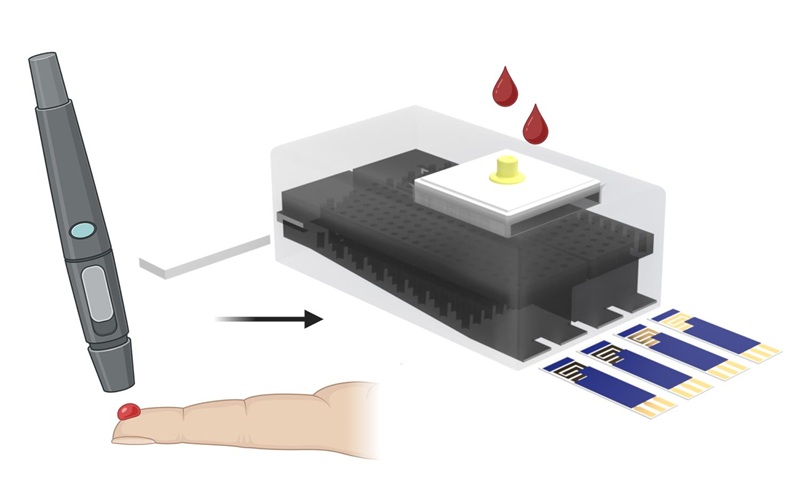
New Test Distinguishes Vaccine-Induced False Positives from Active HIV Infection
Since HIV was identified in 1983, more than 91 million people have contracted the virus, and over 44 million have died from related causes. Today, nearly 40 million individuals worldwide live with HIV-1,... Read more
Gene Signature Test Predicts Response to Key Breast Cancer Treatment
DK4/6 inhibitors paired with hormone therapy have become a cornerstone treatment for advanced HR+/HER2– breast cancer, slowing tumor growth by blocking key proteins that drive cell division.... Read more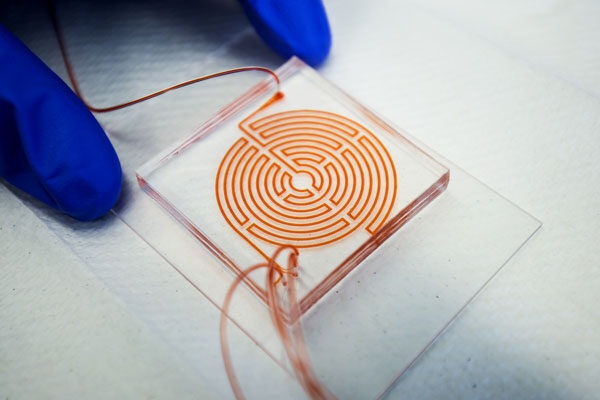
Chip Captures Cancer Cells from Blood to Help Select Right Breast Cancer Treatment
Ductal carcinoma in situ (DCIS) accounts for about a quarter of all breast cancer cases and generally carries a good prognosis. This non-invasive form of the disease may or may not become life-threatening.... Read moreMicrobiology
view channelRapid POC Tuberculosis Test Provides Results Within 15 Minutes
Tuberculosis remains one of the world’s deadliest infectious diseases, and reducing new cases depends on identifying individuals with latent infection before it progresses. Current diagnostic tools often... Read more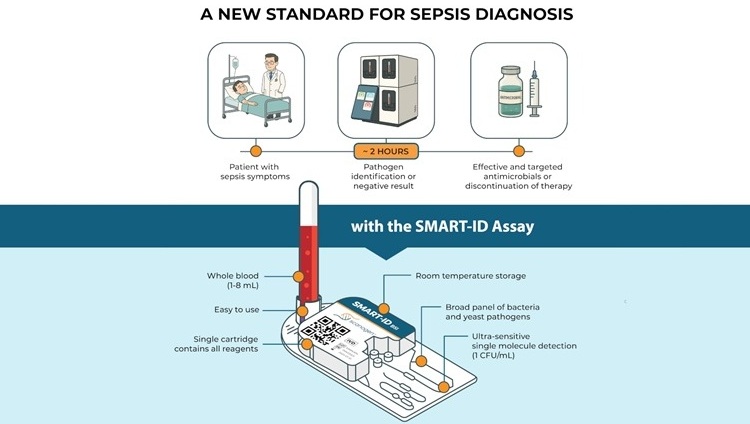
Rapid Assay Identifies Bloodstream Infection Pathogens Directly from Patient Samples
Bloodstream infections in sepsis progress quickly and demand rapid, precise diagnosis. Current blood-culture methods often take one to five days to identify the pathogen, leaving clinicians to treat blindly... Read morePathology
view channelAI Tool Outperforms Doctors in Spotting Blood Cell Abnormalities
Diagnosing blood disorders depends on recognizing subtle abnormalities in cell size, shape, and structure, yet this process is slow, subjective, and requires years of expert training. Even specialists... Read more
AI Tool Rapidly Analyzes Complex Cancer Images for Personalized Treatment
Complex digital biopsy images that typically take an expert pathologist up to 20 minutes to assess can now be analyzed in about one minute using a new artificial intelligence (AI) tool. The technology... Read moreTechnology
view channel
AI Saliva Sensor Enables Early Detection of Head and Neck Cancer
Early detection of head and neck cancer remains difficult because the disease produces few or no symptoms in its earliest stages, and lesions often lie deep within the head or neck, where biopsy or endoscopy... Read more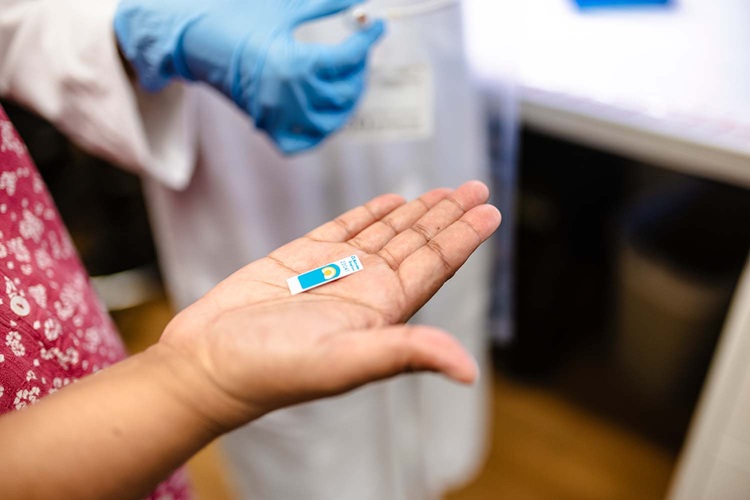
AI-Powered Biosensor Technology to Enable Breath Test for Lung Cancer Detection
Detecting lung cancer early remains one of the biggest challenges in oncology, largely because current tools are invasive, expensive, or unable to identify the disease in its earliest phases.... Read moreIndustry
view channel
Abbott Acquires Cancer-Screening Company Exact Sciences
Abbott (Abbott Park, IL, USA) has entered into a definitive agreement to acquire Exact Sciences (Madison, WI, USA), enabling it to enter and lead in fast-growing cancer diagnostics segments.... Read more











